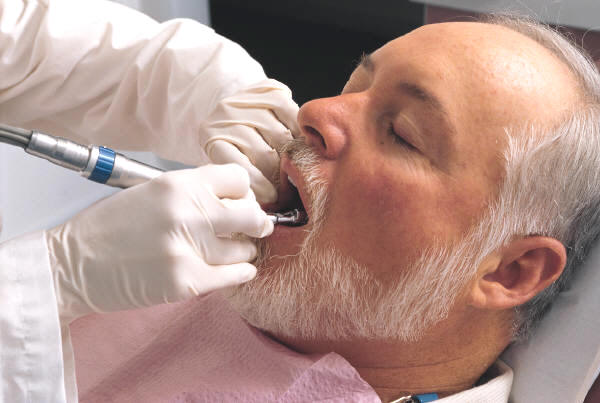 An innovative device developed by a student of Indian Institute of Technology (IIT), Delhi could soon make examining haemoglobin and identifying anaemic cases an easy and quick process. In what could be a breakthrough in the field of biomedical sciences, Ambar Srivastava of IIT has developed a haemoglobin metre named as the TrueHb Hemometer to test haemoglobin.
An innovative device developed by a student of Indian Institute of Technology (IIT), Delhi could soon make examining haemoglobin and identifying anaemic cases an easy and quick process. In what could be a breakthrough in the field of biomedical sciences, Ambar Srivastava of IIT has developed a haemoglobin metre named as the TrueHb Hemometer to test haemoglobin.
TrueHBThe pocket sized haemoglobin metre is the first case of an innovation from the biomedical engineering department of IIT-Delhi actually getting productized. Developed at the IIT’s Centre for Biomedical Engineering with funding received from the Technology Development Board of the Department of Science and Technology, the device will help in early identification and dealing of anaemia cases, which is a major silent killer in India and is the underlying cause of a majority of maternal and foetal deaths in the country. The department was established in 1971 as a joint venture between IIT Delhi and the All India Institute of Medical Sciences (AIIMS) to develop healthcare technologies.
AIIMS New Delhi has already authenticated the device for its effectiveness. AIIMS tested the effectiveness and accuracy of the TrueHb in a laboratory set up and found a high level of accurate measure of the haemoglobin level.
Dr Renu Saxena, professor and head of the haematology department at AIIMS New Delhi, told India Medical Times, “Yes, we have tested the efficacy of the TrueHb Hemometer here at AIIMS and I can say it is quite an innovation. It is smart, accurate and cost effective.”
Ambar Srivastava, ?founder and managing director, Wrig Nanosystems, told India Medical Times, “I started working on the idea in September 2010. Bioelectronics has been an area of my interest and I am very passionate about it. I started thinking of this concept during my second year of B Tech, IIT Delhi. After completing my graduation and masters in B Tech, I decided to go for PhD but then I thought why not build this product and start my own company. I learnt a lot from people at IIT, especially my professors. My seniors and a couple of my friends too encouraged me a lot.”
To commercialise and bring the device to the doorstep of every healthcare centre, Srivastava established a company, named Wrig Nanosystems, to produce TrueHb Hemometers.
Srivastava said, “I started Wrig Nanosystems Pvt Ltd in 2010. Our product is based upon our patent pending technologies, is only of its kind from India and far superior in performance than others in the world. It is comparatively very affordable, pocket sized, and world class in quality. It will transform healthcare and make the decision taking process faster and accurate. This technology is ultra-convenient, weighing around 60 grams like a glucometer with just a tiny drop of blood from a pinprick on the disposable strip. It not only reads the accurate level within 45 seconds, but also stores upto 1,000 such readings. It can be charged like a mobile phone and allows up to 300 tests per charge. The CBC (complete blood count) counter is the gold standard for haemogram tests in labs. It could cost Rs 4-20 lakh, is at least twice the size of a personal computer and needs regular power supply. Though price of the new product is still to be finalized, but it is going to be much cheaper than any other device available in the market.”
“Right now we are busy finalizing the strategy for launching the first bulk of the product on pilot basis in the Delhi/NCR region,” he said.
Srivastava further said, “It was the combined efforts of people from different disciplines — Biochemistry, Micro-optics, Embedded Electronics, Computational Algorithm, Electrochemistry, and Industrial Designing. The development of such devices is highly multi-disciplinary and requires optimum balance of application of different fields in a right manner. Being a research and development organization, we are currently developing similar ultra-portable and affordable devices for all other blood testing profiles, which are expected to be innovated soon.”
He said, “We have an objective to change the entire healthcare paradigm globally. Today, a doctor writes a test and patients go to path labs for test which in turn is produced to the doctor after some days. We want to cut down that cycle entirely. Providing quick and affordable devices to doctors would cut down the need to go to the path labs, and with our devices 60-70 per cent cases would get tested at doctor’s clinic itself. This is where revolution in faster, smarter and wider healthcare delivery will begin.”
Srivastava further said, “I think doctors should open up in adopting such new technologies which may make their caregiving faster, convenient and affordable. They should be open to the changes that technology is bringing to make healthcare delivery system smarter. For other players that are involved in healthcare equipment research and manufacturing, I believe it is our moral duty to ensure that the deepest corner of the world should have access to our services. If a technology cannot benefit the majority, then the fundamental definition of an innovation loses its ground.”
Handheld devices are an upcoming wave in healthcare and are expected to revolutionize the entire healthcare system in the future. Soon, common people will be able to perform self-tests conveniently in their homes, record and maintain their medical data and monitor their health regularly, provided such innovations are researched and commercialized with domestic funding and support. Once such devices are made available, the average life expectancy of individuals can potentially be increased by a minimum 10-15 years through effective regular home health monitoring.
Source: India Medical Times




 An innovative device developed by a student of Indian Institute of Technology (IIT), Delhi could soon make examining haemoglobin and identifying anaemic cases an easy and quick process. In what could be a breakthrough in the field of biomedical sciences, Ambar Srivastava of IIT has developed a haemoglobin metre named as the TrueHb Hemometer to test haemoglobin.
An innovative device developed by a student of Indian Institute of Technology (IIT), Delhi could soon make examining haemoglobin and identifying anaemic cases an easy and quick process. In what could be a breakthrough in the field of biomedical sciences, Ambar Srivastava of IIT has developed a haemoglobin metre named as the TrueHb Hemometer to test haemoglobin.

